
Optimal Growing Conditions for Succulents: Sun or Shade?
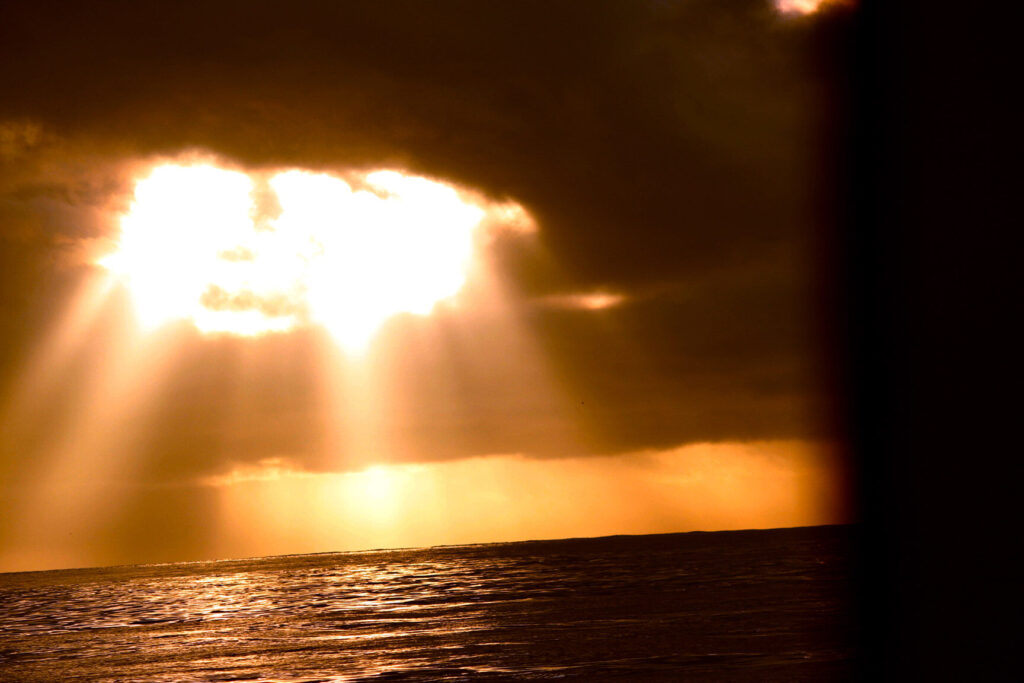
Succulents have become increasingly popular in recent years due to their unique and beautiful appearance, as well as their reputation for being low-maintenance plants. These fleshy plants are able to store water in their leaves, stems, and roots, allowing them to survive and thrive in arid conditions. However, when it comes to providing optimal growing conditions for succulents, one question often arises: should they be placed in direct sunlight or in the shade?
We will explore the ideal growing conditions for succulents and discuss whether they should be placed in sun or shade. We will examine the natural habitats of succulents and how they have adapted to different light conditions. Additionally, we will provide tips and guidelines for caring for succulents, including how to determine the right amount of light they need and how to prevent sunburn or etiolation. By the end of this article, you will have a better understanding of how to create the perfect environment for your succulents to thrive.
- Succulents thrive in bright sunlight
- Place your succulents in a location that receives at least 6 hours of direct sunlight per day
- If you are growing succulents indoors, place them near a south-facing window where they can get the most sunlight
- Some succulents can tolerate partial shade, but they still require some direct sunlight
- If you notice your succulents stretching or becoming leggy, it means they are not getting enough sunlight
- Avoid placing succulents in full shade, as this can cause them to become weak and prone to disease
- If you live in a hot climate, provide some shade during the hottest part of the day to prevent sunburn on your succulents
- Monitor your succulents closely and adjust their sun exposure as needed to find the optimal balance between sun and shade
- Frequently Asked Questions
Succulents thrive in bright sunlight
Succulents are known for their ability to thrive in bright sunlight. These plants have adapted to arid environments, and their thick, fleshy leaves and stems allow them to store water efficiently. As a result, they are well-suited to sunny conditions.
When providing optimal growing conditions for succulents, it is essential to consider their light requirements. Most succulents prefer at least six hours of direct sunlight each day. Placing them in a location where they can receive ample sunlight will ensure their healthy growth and vibrant colors.
Exposure to sunlight helps succulents to develop their characteristic compact and rosette-like shapes. The intensity of sunlight also affects the coloration of succulents, with many species displaying more vibrant hues when exposed to bright light.
However, it is crucial to strike a balance with the amount of sunlight provided to succulents. While they thrive in full sun, excessive exposure to intense sunlight during the hottest hours of the day can cause their leaves to become scorched or sunburned. To prevent this, it is recommended to provide some shade during the hottest part of the day, especially in regions with intense summer heat.
 Maximum Size of Succulent Plants in Optimal Growing Conditions
Maximum Size of Succulent Plants in Optimal Growing ConditionsTips for providing optimal sunlight conditions for succulents:
- Place succulents in a location where they can receive at least six hours of direct sunlight each day.
- Monitor the intensity of sunlight and provide some shade during the hottest hours of the day to prevent leaf damage.
- Consider the specific light requirements of each succulent species, as some may tolerate more shade than others.
- Rotate the position of your succulents regularly to ensure even exposure to sunlight and promote balanced growth.
By providing the right amount of sunlight and shade, you can create optimal growing conditions for your succulents. Remember to observe your plants closely and make adjustments as needed to help them thrive and flourish.
Place your succulents in a location that receives at least 6 hours of direct sunlight per day
When it comes to growing succulents, one of the key factors to consider is the amount of sunlight they receive. Succulents are known for their ability to thrive in sunny and arid conditions, making them perfect for those with a busy schedule or a less-than-green thumb. However, it is important to find the optimal growing conditions for your succulents in order to ensure their health and longevity.
So, what is the optimal amount of sunlight for succulents?
Experts recommend placing your succulents in a location that receives at least 6 hours of direct sunlight per day. This means finding a spot in your home or garden where they can bask in the sun's rays for a significant portion of the day. Succulents are native to desert regions, where they are exposed to intense sunlight, so providing them with ample sunlight is essential for their growth and overall well-being.
Why is sunlight important for succulents?
 Choosing Low-Maintenance Outdoor Perennial Succulents
Choosing Low-Maintenance Outdoor Perennial SucculentsSunlight plays a crucial role in the growth and development of succulents. It provides the energy needed for photosynthesis, a process in which plants convert sunlight into energy to fuel their growth. Without enough sunlight, succulents may become weak and etiolated, meaning they will stretch and become leggy in search of more light. This not only affects their appearance but also their ability to survive and thrive.
Where should you place your succulents to ensure they receive enough sunlight?
When choosing a location for your succulents, opt for a spot that receives direct sunlight for at least 6 hours a day. This could be a sunny windowsill, a balcony, a patio, or even your garden. Keep in mind that the intensity of sunlight varies depending on the time of year and your geographical location. You may need to monitor your succulents and adjust their placement accordingly to ensure they are getting the right amount of sunlight.
What if you don't have a location with enough sunlight?
If you don't have a spot in your home or garden that receives 6 hours of direct sunlight per day, don't worry! Succulents can also tolerate partial shade. In fact, some succulent species prefer to be shielded from intense sunlight, especially during the hottest hours of the day. You can place them in an area that receives filtered or indirect sunlight, such as under a sheer curtain or in a shaded corner of your garden.
Conclusion
Providing your succulents with the optimal amount of sunlight is crucial for their growth and well-being. Aim for at least 6 hours of direct sunlight per day, but be mindful of the intensity and adjust their placement as needed. If you don't have access to enough sunlight, partial shade can also work for certain succulent species. By finding the right balance of sun and shade, you can ensure that your succulents thrive and bring beauty to your space.
 Is Lack of Sunlight Killing My Succulent?
Is Lack of Sunlight Killing My Succulent?If you are growing succulents indoors, place them near a south-facing window where they can get the most sunlight
When it comes to growing succulents, one of the most important factors to consider is the amount of sunlight they receive. Succulents are known for their ability to thrive in arid conditions, but they still need a good amount of sunlight to grow and thrive.
For those who are growing succulents indoors, it is important to place them near a south-facing window where they can receive the most sunlight. South-facing windows tend to get the most sunlight throughout the day, making them an ideal location for succulents.
When positioning your succulents near a south-facing window, it is important to consider the intensity of the sunlight. While succulents love sunlight, they can also get sunburned if exposed to intense, direct sunlight for prolonged periods. To prevent this, you can use sheer curtains or blinds to filter the sunlight and provide some shade during the hottest parts of the day.
In addition to positioning your succulents near a south-facing window, you can also consider using artificial grow lights to supplement the sunlight. This can be especially beneficial during the winter months when daylight hours are shorter. Opt for full-spectrum grow lights that mimic natural sunlight and adjust the distance of the lights according to the needs of your succulents.
Remember to rotate your succulents every few weeks to ensure even growth. Succulents tend to grow towards the light source, so rotating them will help prevent them from leaning too much in one direction.
Optimal Growing Conditions for Succulents
Aside from sunlight, there are a few other factors to consider when providing optimal growing conditions for your succulents:
 Optimal Outdoor Climate for Succulents: Temperature Range Tips
Optimal Outdoor Climate for Succulents: Temperature Range Tips- Temperature: Succulents generally prefer warm temperatures, between 70-90°F (21-32°C) during the day, and cooler temperatures at night. Avoid exposing them to extreme temperature fluctuations.
- Watering: Succulents are adapted to survive in dry conditions, so it's important not to overwater them. Allow the soil to dry out completely between waterings, and be cautious of waterlogged soil, as this can lead to root rot.
- Soil: Succulents require well-draining soil to prevent excess moisture retention. Use a potting mix specifically formulated for succulents or create your own by mixing regular potting soil with sand or perlite.
- Container: Choose a container with drainage holes to ensure excess water can escape. This will prevent water from pooling at the bottom and potentially causing root rot.
- Fertilizer: Succulents have low nutritional requirements, so fertilize them sparingly. Use a balanced, water-soluble fertilizer diluted to half-strength, and apply it during the growing season.
By providing the right amount of sunlight, along with the optimal growing conditions mentioned above, you can ensure that your succulents thrive and display their unique beauty.
Some succulents can tolerate partial shade, but they still require some direct sunlight
When it comes to growing succulents, one of the key factors to consider is the amount of sunlight they receive. While succulents are known for their ability to survive in dry conditions, they still require some direct sunlight to thrive. However, it is important to note that not all succulents have the same sun requirements.
Some succulents, such as Haworthias and Gasterias, can tolerate partial shade. These varieties have adapted to grow in the understory of larger plants, where they receive filtered or dappled sunlight. In their natural habitat, they are accustomed to growing under the shade of trees or rocks, which protects them from intense sunlight.
While these shade-tolerant succulents can survive in lower light conditions, it is crucial to provide them with some direct sunlight. Placing them near a bright window or providing them with a few hours of morning or late afternoon sun outdoors can help promote healthy growth.
On the other hand, most succulents, including popular varieties like Echeverias and Sedums, thrive in full sun conditions. These sun-loving succulents have evolved to withstand direct sunlight and can handle more intense heat and drought. They typically have thicker leaves and a more compact growth habit, which helps them retain water and protect themselves from excessive sun exposure.
If you are growing succulents indoors, it is essential to mimic their natural growing conditions as closely as possible. Placing them near a south-facing window or using grow lights can provide them with the necessary amount of light. However, be cautious not to expose shade-tolerant succulents to too much direct sunlight, as it can cause sunburn and damage their leaves.
While some succulents can tolerate partial shade, they still require some direct sunlight to thrive. Understanding the sun requirements of different succulent varieties is crucial for providing them with optimal growing conditions. Whether you have shade-tolerant succulents or sun-loving ones, finding the right balance of light exposure will help these fascinating plants thrive and beautify your indoor or outdoor space.
 The Ideal Amount of Sunlight for Succulent Growth: A Guide
The Ideal Amount of Sunlight for Succulent Growth: A GuideIf you notice your succulents stretching or becoming leggy, it means they are not getting enough sunlight
Why do succulents stretch?
Succulents stretch when they are not receiving enough sunlight. This phenomenon is known as etiolation. Etiolation occurs when succulents are deprived of bright sunlight and start to grow tall and thin in an attempt to reach for more light. As a result, their leaves become spaced apart and their stems become weak and fragile.
The importance of sunlight for succulents
Sunlight is crucial for the healthy growth and development of succulents. Succulents are adapted to thrive in arid and sunny environments, and they have evolved to store water in their fleshy leaves and stems. Sunlight provides the energy needed for photosynthesis, a process through which succulents convert light into food.
Exposing succulents to sufficient sunlight helps maintain their compact and sturdy growth habit. It also enhances their vibrant colors and patterns, making them more visually appealing.
How much sunlight do succulents need?
Succulents generally require at least 6 hours of direct sunlight per day to thrive. However, the ideal amount of sunlight may vary depending on the specific type of succulent. Some succulents, such as Sedum and Echeveria, prefer full sun exposure and can tolerate intense sunlight for several hours each day. On the other hand, certain species, like Haworthia and Gasteria, are better suited to partial shade and can suffer from sunburn if exposed to excessive sunlight.
It is important to observe your succulents and monitor their response to sunlight. If you notice signs of stretching or discoloration, it may indicate that your succulents are receiving either too much or too little sunlight. Adjust their exposure accordingly to ensure optimal growth.
What if you don't have access to direct sunlight?
If you don't have access to direct sunlight, don't worry! Succulents can still thrive in bright, indirect light. Place them near a window that receives bright light throughout the day, or use artificial grow lights to supplement their light requirements. Keep in mind that succulents grown in lower light conditions may not exhibit the same compact growth habit or intense colors as those grown in direct sunlight.
 Sunlight Needs of Succulent Plants: Finding the Perfect Balance
Sunlight Needs of Succulent Plants: Finding the Perfect BalanceProviding the proper amount of sunlight is essential for maintaining the health and appearance of your succulents. Aim to provide at least 6 hours of direct sunlight per day, but be mindful of the specific needs of different succulent species. By ensuring optimal growing conditions, you can enjoy vibrant and thriving succulents in your home or garden.
Avoid placing succulents in full shade, as this can cause them to become weak and prone to disease
When it comes to growing succulents, it is important to provide them with the optimal growing conditions. One of the key factors to consider is the amount of sunlight they receive. While succulents are known for their ability to tolerate harsh conditions, it is crucial to strike the right balance between sun and shade.
Sunlight Requirements for Succulents
Succulents thrive in bright sunlight, making it essential to provide them with ample exposure. Placing your succulents in an area that receives at least six hours of direct sunlight per day is ideal. This will ensure that they receive the necessary energy for photosynthesis and maintain their vibrant colors.
However, it is important to note that succulents can get sunburned if exposed to intense sunlight for prolonged periods. To avoid this, it is recommended to provide them with some shade during the hottest parts of the day, especially in regions with intense summer heat.
Shade Requirements for Succulents
Avoid placing succulents in full shade, as this can cause them to become weak and prone to disease. While some succulent species can tolerate partial shade, it is best to provide them with bright, indirect light. This can be achieved by placing them near a window that receives indirect sunlight or by using sheer curtains to filter the light.
It is worth mentioning that succulents grown in too much shade may become leggy and stretch towards the light source. This can lead to weak stems and a less compact growth habit. Therefore, finding the right balance between sun and shade is crucial for promoting healthy succulent growth.
Optimal Growing Conditions
To provide optimal growing conditions for your succulents, it is recommended to place them in an area that receives bright light for a significant portion of the day. This can be achieved by positioning them near a south or west-facing window, balcony, or patio where they can receive direct sunlight.
 Can Peat Moss Be Beneficial as a Soil Amendment for Succulents?
Can Peat Moss Be Beneficial as a Soil Amendment for Succulents?If you live in an area with intense heat or strong sunlight, providing some shade during the hottest part of the day can help protect your succulents from sunburn. This can be done by using shade cloth or by moving them to a location where they receive partial shade during the peak hours of sunlight.
Remember to monitor your succulents closely and adjust their sunlight exposure accordingly. Each succulent species may have slightly different light requirements, so it is essential to research the specific needs of the succulents you are growing.
Finding the right balance between sun and shade is crucial for the optimal growth and health of your succulents. Providing them with bright, indirect light for most of the day, while protecting them from intense sunlight, will ensure their vibrant colors and compact growth habit.
If you live in a hot climate, provide some shade during the hottest part of the day to prevent sunburn on your succulents
Succulents are known for their ability to thrive in dry and arid conditions, making them a popular choice for both indoor and outdoor gardens. However, when it comes to their ideal growing conditions, there is often a debate about whether succulents should be grown in full sun or partial shade. While succulents do require ample sunlight to grow and thrive, providing some shade during the hottest part of the day can be beneficial for their overall health.
When succulents are exposed to intense and direct sunlight for prolonged periods, they can suffer from sunburn. Sunburn on succulents manifests as discolored or scorched patches on their leaves or stems. This can not only mar the appearance of the plant but also weaken its overall health and resilience.
By providing some shade during the hottest part of the day, you can protect your succulents from the harsh rays of the sun and prevent sunburn. This is especially important if you live in a region with a hot and dry climate, where the sun's intensity is particularly high.
 Can Succulents Thrive Outdoors in Any Climate and Season?
Can Succulents Thrive Outdoors in Any Climate and Season?How to provide shade for your succulents
There are several ways you can provide shade for your succulents, depending on the size and location of your garden:
- Using shade cloth: Shade cloth is a versatile and effective option for providing shade to your succulents. It can be easily installed over your garden beds or individual plants, allowing filtered sunlight to reach the plants while reducing the intensity of direct sunlight.
- Creating natural shade: If you have larger succulents or cacti, you can strategically place them under the canopy of taller plants or trees. This will create natural shade and protect them from direct sunlight during the hottest part of the day.
- Using sunshades: Sunshades or umbrellas can be used to provide temporary shade to potted succulents. Simply position the sunshade or umbrella in a way that blocks direct sunlight during the hottest hours.
It's important to note that while providing shade is beneficial, succulents still require a significant amount of sunlight to thrive. Thus, it's essential to strike a balance between providing shade and ensuring they receive enough light.
By taking the necessary steps to protect your succulents from excessive sunlight, you can create optimal growing conditions for them. This will not only prevent sunburn and damage but also promote healthy growth and vibrant colors in your succulent collection.
Monitor your succulents closely and adjust their sun exposure as needed to find the optimal balance between sun and shade
When it comes to growing succulents, finding the perfect balance between sun and shade is crucial. These hardy plants thrive in arid conditions, but they can also suffer if exposed to too much direct sunlight. On the other hand, depriving them of sunlight altogether can lead to weak and etiolated growth.
Monitoring your succulents closely is key to determining their sun exposure needs. Observing their growth patterns and physical appearance can provide valuable insights into whether they are receiving the right amount of sunlight.
Signs of too much sun
If your succulents are exposed to excessive sunlight, you may notice some telltale signs. The most common indication is sunburn, which manifests as brown or discolored patches on the leaves. Over time, these patches may become dry and shriveled. Additionally, succulents that receive too much sun may develop a bleached or washed-out appearance.
Another sign of excessive sun exposure is leaf curling or folding. When succulents are exposed to intense sunlight, they may try to protect themselves by curling their leaves inward or folding them. This reduces the surface area exposed to the sun, helping them retain moisture.
 Unraveling the Secrets of Succulents: Thriving in Diverse Environments
Unraveling the Secrets of Succulents: Thriving in Diverse EnvironmentsIt's important to note that while some succulents can tolerate more sun than others, prolonged exposure to intense sunlight can be harmful to most varieties. Therefore, it's crucial to find the optimal balance for your specific succulent species.
Signs of too little sun
On the other hand, succulents deprived of sunlight can exhibit signs of weak growth. If your succulent is not receiving enough sun, you may notice elongated stems and stretched-out leaves. These signs indicate etiolation, a condition where plants stretch towards the light source in an attempt to maximize sun exposure.
Furthermore, succulents lacking sufficient sunlight may have pale or faded colors. The lack of light can affect their ability to produce pigments, resulting in a less vibrant appearance.
It's worth mentioning that while succulents can tolerate some shade, completely depriving them of sunlight can hinder their growth and overall health. Providing them with adequate light is essential for their photosynthesis process and overall well-being.
Finding the optimal balance
Each succulent species has its own light requirements, so it's important to research the specific needs of your plants. However, as a general guideline, most succulents thrive in bright, indirect sunlight.
One effective way to find the optimal balance is through a process called "sun acclimation." This involves gradually increasing the amount of sunlight your succulents receive over time. Start by placing them in a location with indirect sunlight and gradually expose them to more direct sunlight for a few hours each day.
Alternatively, if you notice signs of sunburn or etiolation, you can provide some shade for your succulents. This can be achieved by using sheer curtains, shade cloths, or placing them in a location with filtered sunlight.
 The Ultimate Guide: Maximum Size of Indoor and Outdoor Succulents
The Ultimate Guide: Maximum Size of Indoor and Outdoor SucculentsRemember to monitor your succulents closely during this adjustment period. Observe how they respond to changes in light conditions and make adjustments accordingly. With time and careful observation, you'll be able to find the optimal balance of sun and shade for your succulents, ensuring their healthy growth and vibrant appearance.
Frequently Asked Questions
1. Do succulents prefer sun or shade?
Most succulents prefer bright sunlight, at least 6 hours a day. However, some succulents can tolerate partial shade.
2. Can succulents survive in full shade?
While some succulents can survive in full shade, they may not thrive or grow as well as those in brighter conditions.
3. How much sunlight is too much for succulents?
Direct, intense sunlight for extended periods can cause sunburn and damage to succulents. It's best to provide some shade during the hottest part of the day.
4. Can succulents be grown indoors?
Yes, many succulents can be successfully grown indoors. They need bright indirect light, so placing them near a window is ideal.
If you want to read more articles similar to Optimal Growing Conditions for Succulents: Sun or Shade?, you can visit the Growing Conditions category.

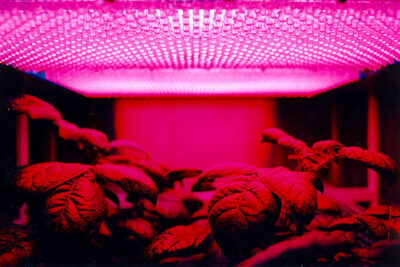
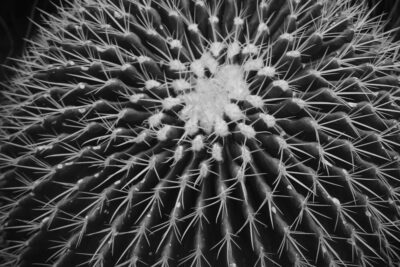
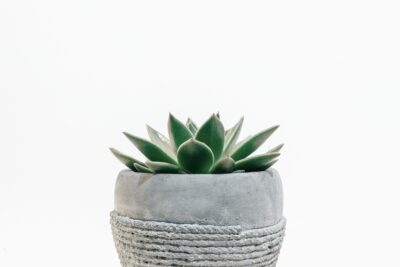
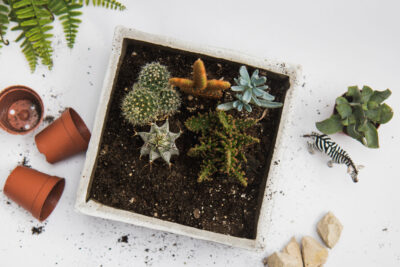

You Must Read